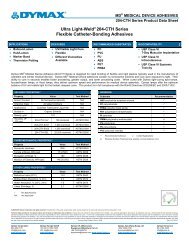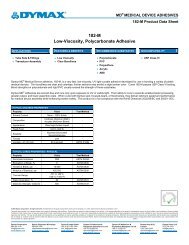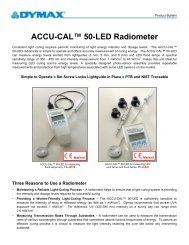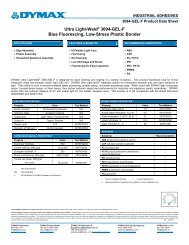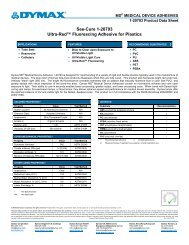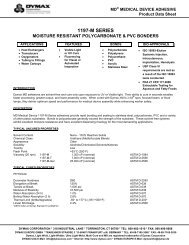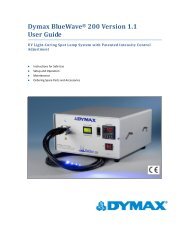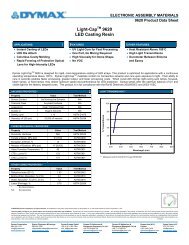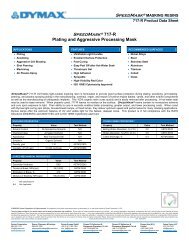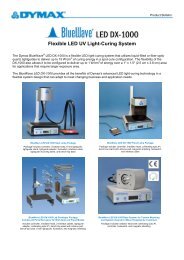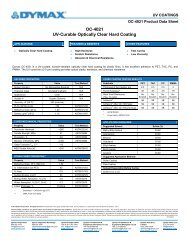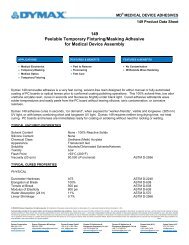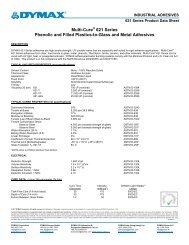Aerobic Adhesives VII – A New High Performance Bonding Option ...
Aerobic Adhesives VII – A New High Performance Bonding Option ...
Aerobic Adhesives VII – A New High Performance Bonding Option ...
You also want an ePaper? Increase the reach of your titles
YUMPU automatically turns print PDFs into web optimized ePapers that Google loves.
Figure 11. Stress/Strain Relationships<br />
Figure 12. Doublet Assembly<br />
3000<br />
Rigid Epoxies<br />
Stress (psi)<br />
2000<br />
1000<br />
UV <strong>Aerobic</strong><br />
Acrylic Urethanes<br />
Silicone<br />
0 10 20 30 40 50<br />
Strain %<br />
Lens Mounting<br />
As lenses get smaller and bonds more delicate, the strategies to overcome the stresses inherent in the<br />
materials and between adjacent bonded surfaces have become more exacting in order to survive the<br />
environmental rigors that the device will be exposed to. Choosing a material such as the OP-29 or OP-30 that<br />
is resilient and strong with low shrinkage characteristics may be ideal for an application of this type.<br />
Optimization of the adhesive in the bond line can be done with some calculations such as this simple model for<br />
calculating adhesive thickness for a lens mount. A preferred bond line might range from 0.002” to 0.005”, but<br />
can vary from 0.005” to 0.25” or more, with special applications requiring greater than a 0.25” bond line.<br />
Figure 13. Simple Lens Potting Model 4 .<br />
dg<br />
Lens<br />
Low Modulus<br />
Adhesive<br />
hr<br />
dm<br />
Cell / Mount<br />
For minimized stress on the lens:<br />
hr = dg(α m - α g )<br />
2(α r - α m )<br />
Where: hr - Required Elastomer Thickness<br />
dg - Lens Outer Diameter<br />
α m - Cell thermal coefficient of expansion<br />
α g - Lens thermal coefficient of expansion



